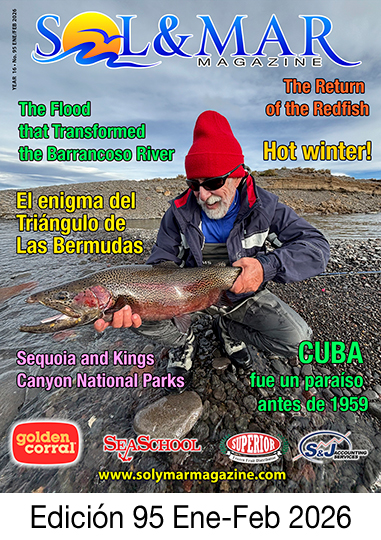Capt. Nestor Alvisa
Hooked on Flamingo Charter
HookedonFlamingo.com 786-387-2443
As we enter September, our last month of summer and start looking forward to October, the beginning of our fall season big changes in fishing patterns are to come. In the meantime, and until that happens my days in Flamingo in September are very numbered as I Usually spend more time offshore and on the reef during this month. On most of our Mahi trips we are mostly running and gunning looking for birds, seaweed patches, or any debris we can find out in the ocean.
Once we find our object that is holding the mahi, my anglers will pitch out either a bucktail jigs or a live pilchard that will not get turned down by a school of mahi. When fishing the reef with my clients we will typically go with most reef programs that everyone goes by. We first start by anchoring up on a section of a reef, we then put chum in our chum bag and let the chum do the work as well let the yellowtail snapper come up to the chum and get comfortable before we start catching them. Once we are ready to catch them silversides, ballyhoo strips or squid chunks will work great.
On the few days I do fish in Flamingo during this month. We still find plenty of snook, redfish, tarpon and tripletail around the beach and creek mouths. On my days out my clients will usually be casting swim baits, live mullet or shrimp under popping corks. On flat days I’ll still try to venture out to any nearby rock pile or structure and give the permit a try as well. As for the month of October, we get into one of my favorite months to fish South Biscayne Bay. As we push further into Fall, we start to see bait become more abundant and much easier to find.
On a typical charter I’ll start my morning looking for diving pelicans or terns working schools of pilchards around the beach, grass flats or channels. Once located filling up your live wells with a couple throws of the net won’t take long. Once I’m loaded up with enough bait the fun begins. I’ll head over to certain finger channels, inshore wrecks or patch reefs and anchor up. Once anchored I’ll start live chumming with the pilchards and it typically doesn’t take too long to see something start to chase or blow up on the freebies! Either a small circle hook, a 1/4 oz jig head or 1/16oz jig head rigged with a pilchard will typically do the trick.















